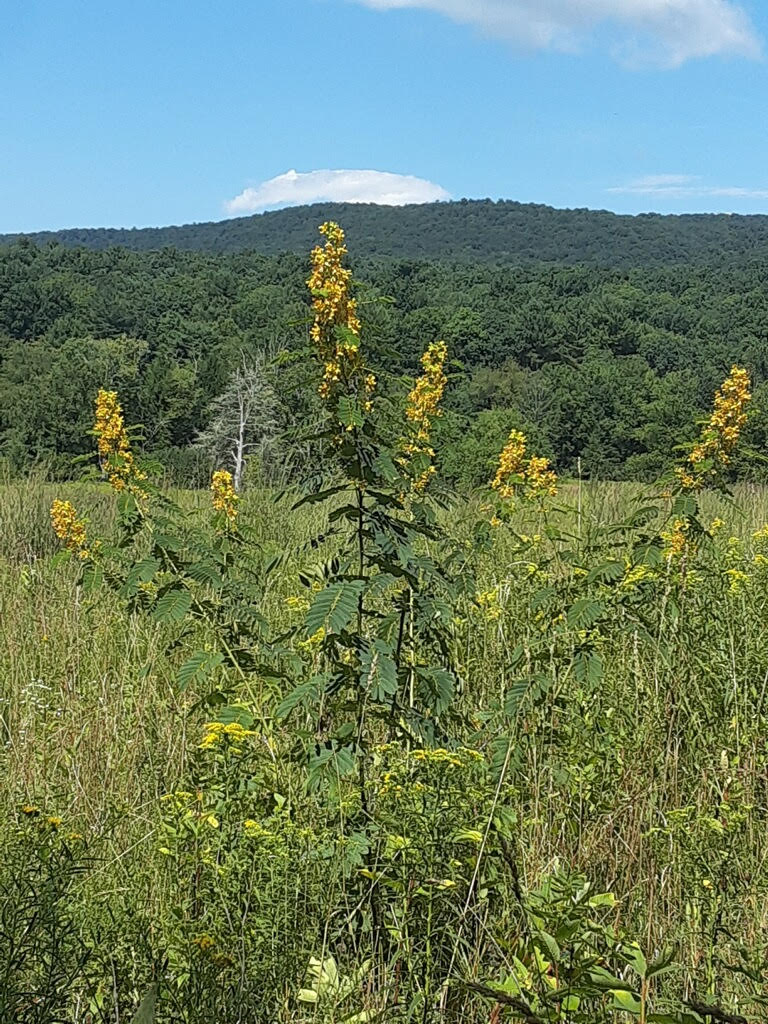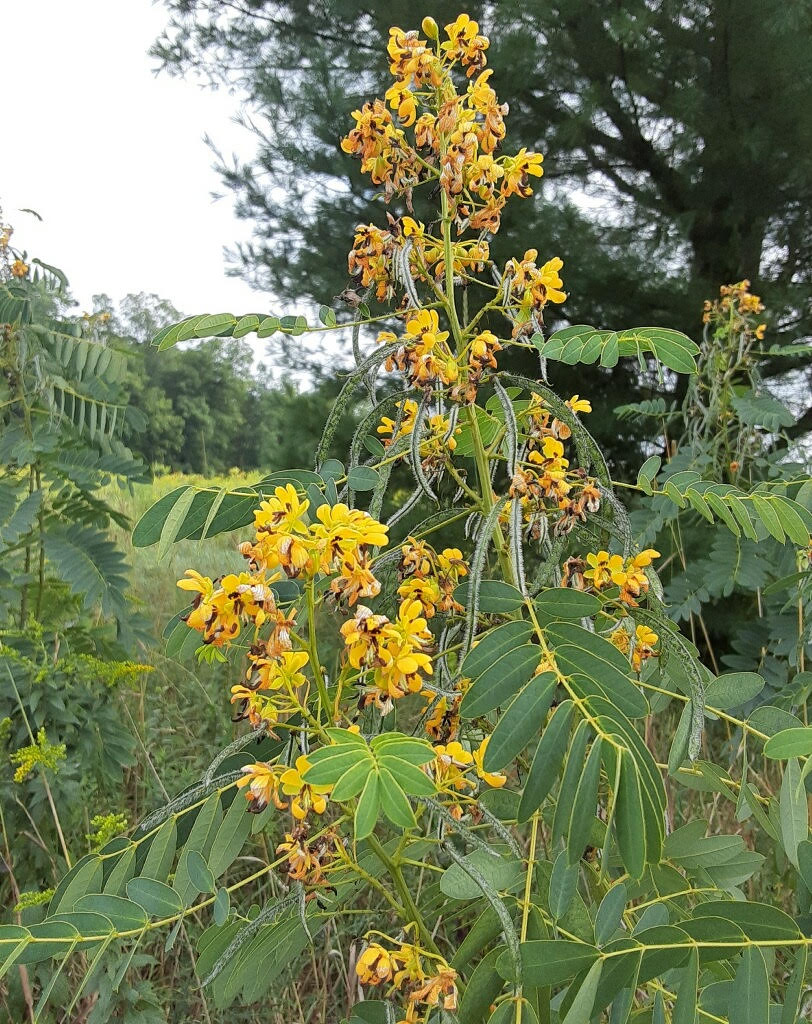By, Susan Sprout
Northern Wild Senna is a member of the Fabaceae family, well-known as the legume or pea or bean family and having about 20,000 species in many countries. This particular species, Senna hebecarpa, is a perennial plant native to northeastern United States from the Great Lakes to Georgia. I found it growing in a field of goldenrods. Taller than I am, it was a real stand out in all that yellowness because of its height. It has yellow flowers, too. Its leaves are pinnately compound – smooth-edged leaflets arranged in pairs, up to ten opposite each other on a single stem, kind of like the barbs of a bird’s feather are arranged on a quill.

This plant’s blooming period begins in late summer, and its yellow petals are beginning to turn white now as they age. Very visible in each flower are five black anthers containing pollen and one curled pistil with long, white hairy edges waiting to pull in the pollen grains. The pistil will slowly develop into a flat, brownish seed pod having up to eighteen segments, each containing one seed. A mature pod is curled and amazingly hairy.

Something else that sets this plant apart from many is that its flowers do not contain nectaries, the glands that produce nectar! The bees that visit, come for its nutritious pollen because it is higher in protein according to a study done at Penn State in 2016. So where’s the nectar? It is in small, club-shaped glands found singly on leaf stems near their point of attachment to the main plant stem. The nectar there seems to attract parasitic wasps, lady beetles and ants which may in turn protect the plant from other types of insects determined to eat its foliage.

Northern Wild Senna plants have a tendency to spread by horizontal rhizomes under the soil and create colonies. They like partial to full sun and loamy, moist soil near streams and water catchment areas. They can also live in sandy and rocky places, too, once they get a foothold. The plants have a vertical growing habit, but may get top heavy as the seed pods develop and flop over sideways.
White-tail deer and other herbivores don’t seem to care for the rather toxic and cathartic (purgative) foliage. Senna plants, like this one, and their near relatives, have been used by native populations in many countries for millennia as laxatives, worm remedies, and as poultices for healing sores.

